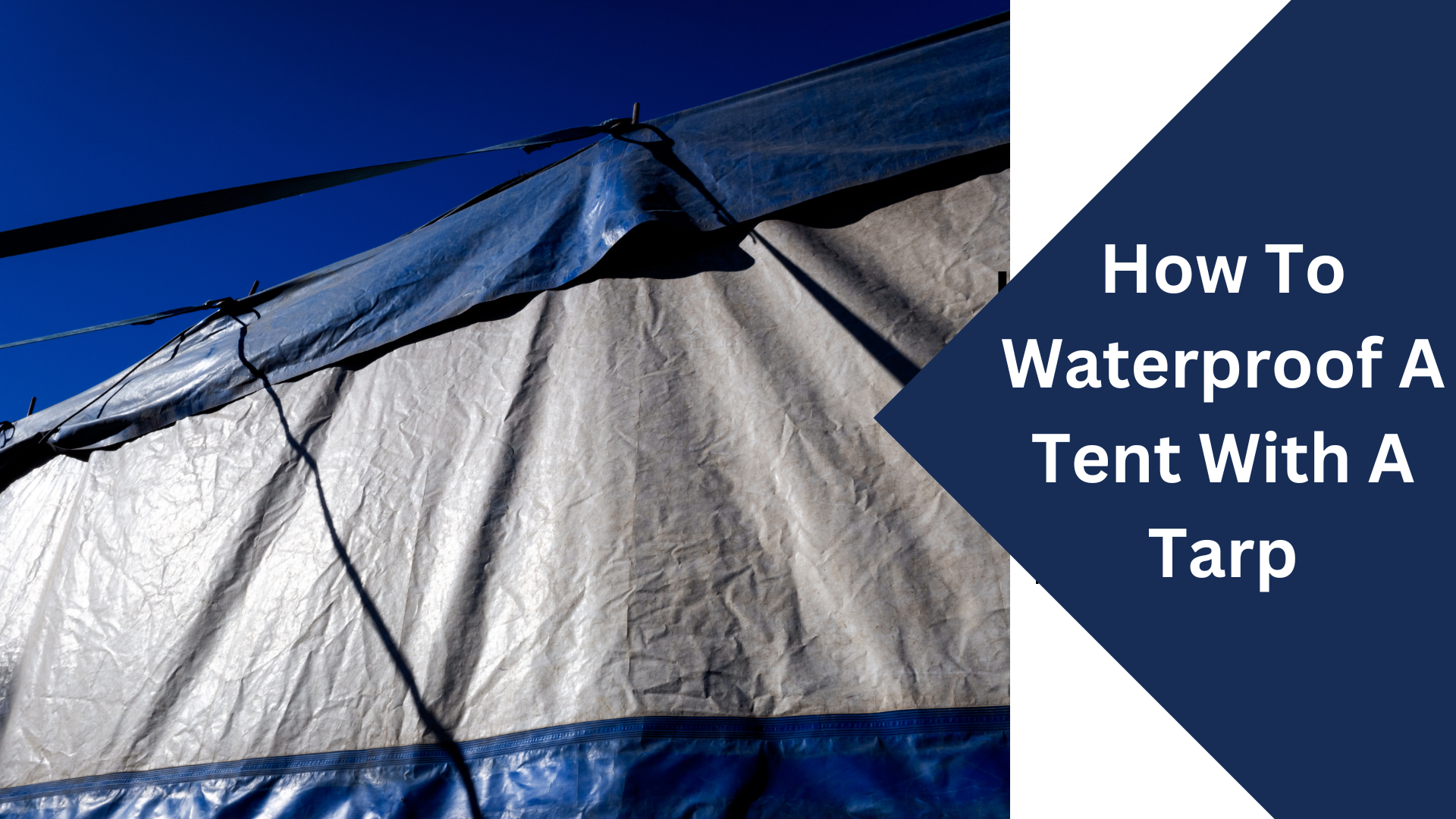When you embark on a camping adventure, the last thing you want is to wake up in the middle of the night with a wet and soggy tent. A sudden rain shower can quickly turn your outdoor adventure into a soggy disaster. To ensure a comfortable and dry camping experience, it’s essential to learn how to waterproof your tent effectively.
But fear not, because, in this guide, we’ll show you how to waterproof a tent with a tarp. Whether you’re a seasoned camper or a newbie, this step-by-step approach will ensure you stay dry and comfortable.
Why Waterproofing Your Tent Matters
Before we dive into the nitty-gritty of waterproofing your tent with a tarp, let’s discuss why this is so crucial. Your tent is your shelter in the great outdoors, and keeping it dry ensures a comfortable and safe camping experience. Rain, dew, or unexpected leaks can ruin your outdoor experience and leave you cold and uncomfortable. Here are a few reasons why waterproofing matters:
Protection from the Elements
Rain, dew, or even morning condensation can leave your tent damp and uncomfortable: proper waterproofing guarantees that you stay dry, no matter what Mother Nature throws at you.
Extended Tent Lifespan
Water damage can significantly reduce the lifespan of your tent. By waterproofing it effectively, you’re investing in your gear’s durability.
Peace of Mind
Knowing your shelter is impervious to water can give you peace of mind during your camping trips. You won’t have to worry about the weather forecast constantly.
How To Waterproof A Tent With A Tarp: A Step By Step Guide
Materials You’ll Need
Before we get started, gather the following materials:
- A tent
- A tarp
- Tent stakes
- Guy lines
- A mallet
- Seam sealer
- A sponge or cloth
- Waterproof spray
1. Choosing the Right Tarp
Not all tarps are created equal. To waterproof your tent effectively, choose a tarp that is slightly larger than your tent footprint. Opt for a durable, waterproof material like nylon or polyester. These materials are lightweight and offer excellent protection against the rain.
2. Setting Up Your Tent
Before laying the tarp, make sure your tent is clean and dry. Remove any debris, dirt, or moisture from the tent’s surface. This step ensures that you get a proper fit with the tarp.
3. Attaching the Tarp
- Lay the Tarp – Spread the tarp on the ground, ensuring it’s the same shape as your tent. Fold any excess tarp under to match the size of your tent.
- Position Your Tent – Set your tent on top of the tarp, aligning it with the tarp’s shape. This creates a protective layer between your tent and the ground.
4. Securing the Tarp
- Tighten the Guy Lines – Secure the tarp by attaching guy lines to the tarp’s grommets and stretching them to nearby stakes. This creates a rainfly effect, directing water away from your tent.
- Adjust for Overhang – Ensure the tarp overhangs your tent’s doors and windows slightly. This prevents rain from seeping inside.
5. Sealing the Seams
- Apply Seam Sealer – Inspect your tent’s seams and apply seam sealer to any areas that may let water in. Pay special attention to the rainfly and ground tarp attachment points.
6. Testing for Leaks
- Perform a Rain Test – Set up a sprinkler or hose to simulate rain and check for leaks. This step allows you to identify and fix any trouble spots.
Tips and Tricks to Enhance Waterproofing Using Tarp
Here are some additional tips to enhance your tent’s waterproofing:
- Use a ground cloth or footprint beneath your tent to protect it from moisture rising from the ground.
- Apply a waterproof spray to your tent’s rainfly and ground tarp for added protection.
- Periodically reapply the seam sealer to maintain the integrity of your tent’s seams.
- When setting up your tent, choose a location with natural windbreaks like trees or rocks to shield it from the wind and rain.
Conclusion
By following these steps and tips on how to waterproof a tent with a tarp, you’ll be well-prepared to enjoy your camping trips without worrying about wet and soggy nights. Remember to select the right materials, perform regular maintenance, and prioritize safety to ensure a dry and comfortable camping experience. Get out there and explore the great outdoors, knowing that your tent is ready to withstand the elements.
FAQs: How to Waterproof a Tent with a Tarp
1. How often should I waterproof my tent with a tarp?
It’s a good practice to waterproof your tent before each camping season and as needed. Regularly inspect your tent for signs of wear and tear, and reapply the seam sealer as necessary.
2. Can I use a tarp to waterproof my tent?
While you can use various tarps, it’s best to choose one made of durable, waterproof materials like nylon or polyester. Ensure the tarp is slightly larger than your tent’s footprint for adequate coverage.
3. What should I do if I find a leak during a camping trip?
If you discover a leak, don’t panic. Use a piece of duct tape or a temporary patch to cover the area until you can apply a more permanent fix with seam sealer.
4. Can I waterproof a tent with a tarp in windy conditions?
Waterproofing your tent with a tarp is possible in windy conditions, but it’s more challenging. Ensure you have extra stakes and guy lines to secure the tarp effectively.
5. Should I remove the tarp after the rain stops?
It’s a good idea to remove the tarp once the rain stops to allow your tent to dry and prevent condensation inside. Make sure your tent is completely dry before packing it up to avoid mold and mildew.
